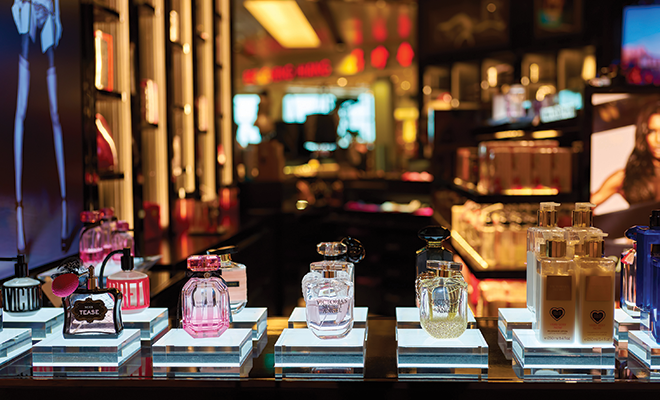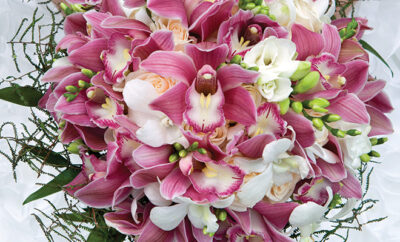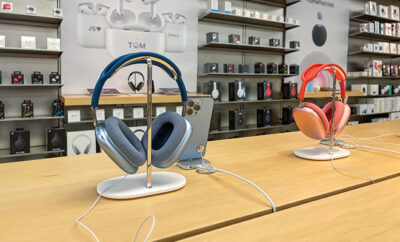
Spritz on a Luxury Fragrance!
The earliest known perfume maker was Tapputi, a chemist in Mesopotamia in the second millennium BCE. From this humble beginning, perfume making continued in India, Cyprus and the Middle East.
Perfume arrived in the Western world in the 14th century in the court of Hungary’s Queen Elizabeth. The perfume was known as Hungary Water. Italy quickly became a center for perfume. In the 16th century, Catherine de Medici’s personal perfumer’s labs were connected to her rooms by a secret passage so the secrets could not escape and become public knowledge.
So much perfume was used in the French court of Louis XV that it became known as “the perfumed court.” Napoleon had two quarts of violet water delivered to him every week and he’s said to have used 60 bottles of double extract of jasmine every month.
During the reign of Queen Victoria of England, the English court preferred light floral scents. Queen Victoria did not care for heavy scents, believing them to be used by prostitutes and therefore unsuitable for her court. In 1845, the British perfumery Creed presented the Queen with a heady scent called Fleurs de Bulgari. Queen Victoria liked it so much that she wore it for the rest of her reign and granted Creed a Royal Warrant in 1885. The delicious formula of Bulgarian rose, musk, ambergris and bergamot has been updated and is still a bestseller today.
Intensity Levels
Perfume comes in various strengths called by different names. Perfume extract contains 20 to 40 percent aromatic compounds and lasts between three and eight hours. Eau de parfum contains 10 to 30 percent aromatic compounds and can last from four to six hours. Eau de toilette, or toilet water, contains 5 to 20 percent aromatic compounds and can last between four and six hours. Eau de cologne, or simply cologne, contains two to three percent aromatic compounds and can last between one and four hours. A higher concentration of aromatic compounds in a perfume increases its value and price.
The Notes
Perfume notes or scents are found in three layers. The top notes are the first scent you smell when applying a perfume. They typically evaporate in 8 to 15 minutes. These notes include citruses, powdery scents and light florals. The middle or heart notes develop after the top notes have evaporated and last approximately 30 minutes. They are often heavier florals. The base notes develop after the other notes. They “fix” the other notes to the skin. These bolder notes include smoky and leather notes.
The Fragrance Wheel
In 1983, Michael Edwards developed a guide for fragrance retailers by classifying 323 fragrances. His book, Fragrances of the World®, is now in its 32nd edition and it has become the Bible of the perfume world, with references to more than 8,000 fragrances, including 900 new releases. The Fragrance Wheel, copyrighted in 1992, is also Edwards’ invention. The wheel is an olfactory map that explains the relationships among the four basic fragrance types and 14 fragrance families.
Oriental Notes
Smooth, sexy and mysterious, the Oriental notes are for sultry evenings with someone special. Floral Oriental has notes of orange blossom and sweet spices; Soft Oriental contains incense and amber; Oriental adds oriental resins; and Woody Oriental contains sandalwood and patchouli.
New fragrance offerings with these blends are Tangier Vanille by Aeria, with Italian bergamot, Madagascar vanilla, Tonka bean, amber and sandalwood; and Elizabeth and James’ Nirvana Bourbon, with vanilla bourbon, woody oak and tuberose.
Woody Notes
Woods includes aromatic woods and vetiver. Mossy Woods contains oak moss and amber; Dry Woods is a mixture of dry woods and leather. These notes add depth to other notes.
B. Balenciaga Intense contains contains notes of green tea, blueberry, queen of the night and cedar. Vilhelm Parfumerie Purple Fig evokes lemon with woody cedar and cypress.
Fresh Notes
Fresh and clean-smelling, Fresh Notes makes up the wheel’s largest section. Aromatic includes lavender and aromatic herbs; Citrus uses bergamot and citrus oils; Water includes marine and aquatic notes. Green uses galbanum and green notes, and Fruity contains berries and fruits.
2017 fragrances in this group are Moschino’s Fresh Couture; with bergamot, mandarin and ylang-ylang, and Dolce & Gabbana’s Velvet Cypress, with Italian cypress and Sicilian lemon.
Floral Notes
Floral resembles fresh-cut flowers. Soft Floral adds aldehydes and powdery notes. The newest fragrances have a preponderance of floral notes. Florals are always popular because their light scent, reminding everyone of fresh flowers, can be worn daily.
Miu Miu L’eau Bleue presents lily of the valley wild rose and akigalawood. Mark Jacobs’ Divine Decadence eau de parfum presents bergamot, cream orange blossom and honeysuckle. Estée Lauder’s Modern Muse Le Rouge eau de parfum spray wafts Bulgarian rose, raspberries and magnolia.
This primer on perfumes still doesn’t answer the most important question. Which perfume is for you? Easy! It’s the one you like and feel good wearing. ■
Sources: bestproducts.com, fragrancesoftheworld.com, glamourmagazine.co.uk and harpersbazaar.com.







